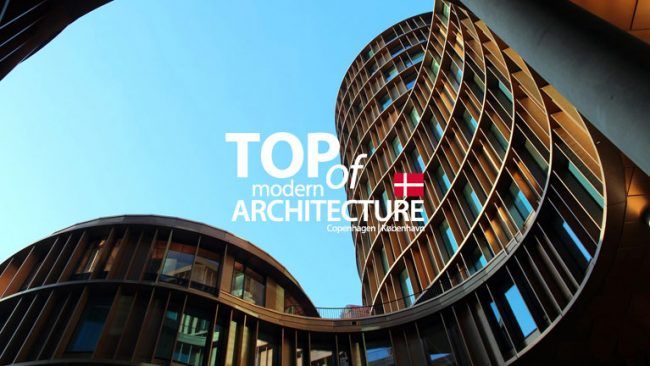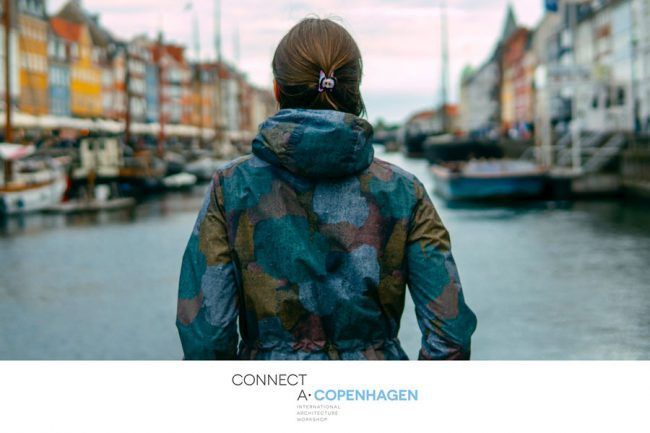We have barely had time to unpack our things since we came back from our last trip to northern Spain and we are already embarking on our next adventure: Denmark and its capital city, Copenhagen.
The Scandinavian country has been for a long time a beacon in terms of avant-garde design. Lamps, pieces of furniture and textiles signed by Danish designers have been setting a trend for their simplicity and sophistication since the 50s. Some of them have become so iconic that can now be found in the most renowned museums around the world: the chair The Egg by Arne Jacobsen or the PH lamp by Henningsen are just two examples.

But brand Denmark is not only famous for these small-scale design pieces. The country is also a biggie in terms of architecture, and has given the world some of its most famous and admired landmarks: from the modern and rational architecture dating back to the mid 20th century to the most contemporary and outstanding projects signed by groundbreaking studios like BIG Group or 3XN. Yes, Danish architecture is still big in architectural terms.
CONNECT.A TAKES US TO DENMARK TO DISCOVER SOME OF THE CLASSICS OF its ARCHITECTURAL AVANT-GARDE
And this is the main goal of our next trip to Copenhagen: to discover with our Architecture students more about the technique, the materials and the construction processes in some of their most recognisable buildings. And getting inspired by them and the architects who designed them.
This year, Connect.A takes us to Copenhagen to reveal some of its architectural secrets, do you double dare to discover them with us?
Lousiana Museum of Modern Art (Jørgen Bo and Vilhelm Wohlert)
Considered a milestone in modern architecture in Denmark, this building from the 50s now houses an important collection of modern art and it has become a major tourist attraction in Copenhagen.

Originally, the goal of its architects was to create a space in which art, architecture and landscape could merge and, as far as possible, create a physical continuity. Although the complex has undergone several extensions, one can still perceive that sense of continuity with the succession of several horizontal constructions. An environment in which buildings are not trying to stand out but, because of their relaxed and unpretentious design, seem to be an additional piece of the museum’s collection.
Bagsværd Church (Jørn Utzon)
It is normal to associate Utzon with one of his most iconic works, the Sydney Opera House. However, the work of the Pritzker Prize 2003 could not be understood without other buildings of smaller scale and fame, always interesting for their natural forms and their perfect integration in the environment that surrounds them.

Bagsværd Church, built in 1976, doesn’t seem to be very striking from the outside, but it hides a surprising interior design. The chapel’s undulating ceiling is perhaps the most eye-catching feature, based on a unique design of inverted vaults built in white, smooth concrete. The outstanding design, together with the use of other natural and resistant materials such as wood, creates an almost ethereal atmosphere and lighting.
Kastrup Airport
Copenhagen Airport is one of the largest transit hubs in Scandinavia with almost 30 million passengers per year. It is also one of the best performing airports in Europe, always ranking high in the top 10 of best airports in the world. A world-renowned infrastructure in terms of beautiful architecture and efficiency in its operations.

The airport, which currently has three terminals, is in the midst of a major expansion project. A project that will multiply its surface, improve passenger flow and enhance user experience. New spaces, more natural light and a new high-speed station will bring Kastrup to the top of the world’s elite airports, and for some pretty good reasons.
Kingo Houses (Jørn Utzon)
Another of the projects that made Jørn Utzon a celebrity in the world of architecture, this housing complex located in the town of Helsingor quickly became a reference in council housing development. It is a set of 63 L-shaped houses inspired by traditional farmhouses in Denmark.

What makes these houses so special? On the one hand, their integration in the surrounding landscape, but also their position on the land, made through a rational use of the existing space and materials. The architect managed to provide each of the individual houses with a unique configuration. And all this keeping the cost at the lowest possible level, as the houses were built for low income workers, who could nonetheless benefit from privacy, natural light and a nice view over the lake that surrounds the area.
The Royal Danish Opera House (Henning Larsen)
The Copenhagen Opera House is not only an iconic venue and a symbol of modern architecture in Denmark, but also one of the most controversial buildings in the capital.

And not only for its powerful and imposing presence over the city’s harbor, but also for its location (just across the Royal Palace of Amalienborg) and for the continued war between architect Henning Larsen and Mærsk McKinney Møller, who funded the project entirely. The result: a gigantic building with a unique and distinctive canopy roof, and a huge interior bubble-like structure that houses the main concert hall.
The opera building has been compared to a grill, considered an example of pure megalomania and it has even been categorized as a failed try for Copenhagen’s own “Guggenheim effect”. The truth is that this building doesn’t go unnoticed when you are en route to the famous Little Mermaid.
Munkegaard School (Arne Jacobsen)
One of the most innovative projects of Danish architect and designer Arne Jacobsen, in which he applied an innovative and repeated structure of buildings and courtyards.

SAS Hotel (Arne Jacobsen)
What can you do when you have very little space to build and you need to squeeze the available area to the maximum? “Build higher!” is what Arne Jacobsen must have thought back in the 50s. And the solution the architect came up with seems quite obvious: combine a tall building for a hotel and a lower building for commercial and office purposes. Add to the formula a triangle-shaped plot and the need for a new railway station, and the result is a masterpiece of classic Danish design… and efficiency!

The complex, completed in 1961, immediately became a symbol of contemporary architecture in the Danish capital: trains, shuttles and buses full of tourists and businessmen arrived directly from the airport to the new business area, which housed a hotel just above it. And, to add an even more avant-garde touch, all the furniture in the building was designed by Jacobsen himself (does the Egg Chair ring a bell?).
COPENHAGEN IS NOT ONLY home to a very rich historical heritage: IT IS a city filled with design-forward architecture of the highest quality
Many adjectives come to mind when you visit the SAS Hotel: modern, elegant, classic. For us, the word that best describes it is sophisticated.
East Cemetery (Sigurd Lewerentz, Malmö)
Since 2000, any visit to Copenhagen necessarily includes a hop to Malmö, in neighbor Sweden. And since it opening, the spectacular Øresund bridge connects both cities and allows, from the Danish capital, an easy, fast (and panoramic) access to Sweden’s third biggest city.

The East Cemetery of Malmö, designed by Lewerentz, surprises the visitor for its simplicity, the way it blends with the landscape and, above all, for the extensive presence of greenery. And everything seems to come together in a space which stands opposite to the other monumental cemeteries across Europe. No wonder it has been selected as one of the most significant cemeteries in the continent.
But this is not the only interesting site in the Swedish city. In fact, from the bridge that connects it to Copenhagen, there is a building on the city’s skyline that immediately catches the eye; a building on the horizon that seems more Mediterranean than Nordic: the Turning Torso, by Valencian architect Santiago Calatrava. The white skyscraper, which stands at 190m high, is not only the tallest in Scandinavia, but also a reminder of our very own City of Arts and Sciences.
It is clear to us that architecture brings different cultures together, strengthens communities and in some way, connects us. It can connect us with the surroundings, with the environment, with other people. That is why this year Connect.A literally connects us to Denmark in a journey in which we will strengthen links with the Nordic country through lectures, workshops and projects related to architecture.

But Copenhagen is just another stop in our journey through Spanish architecture and the world. Because this journey continues…


























